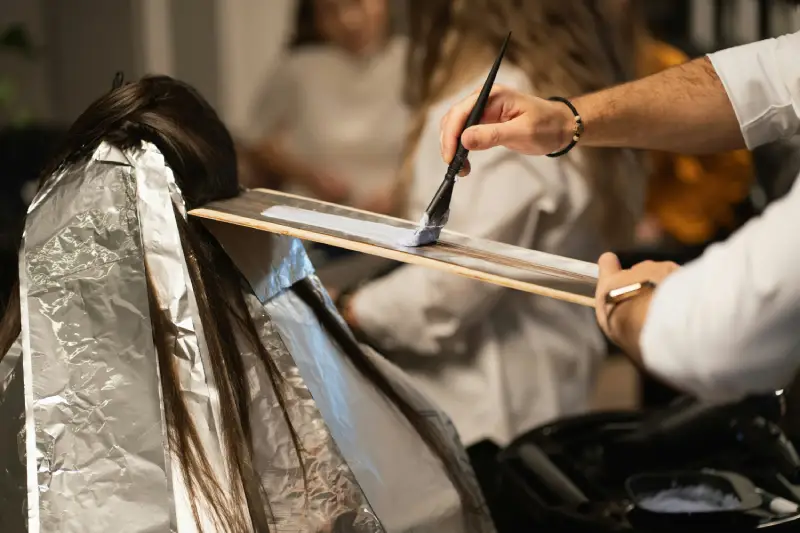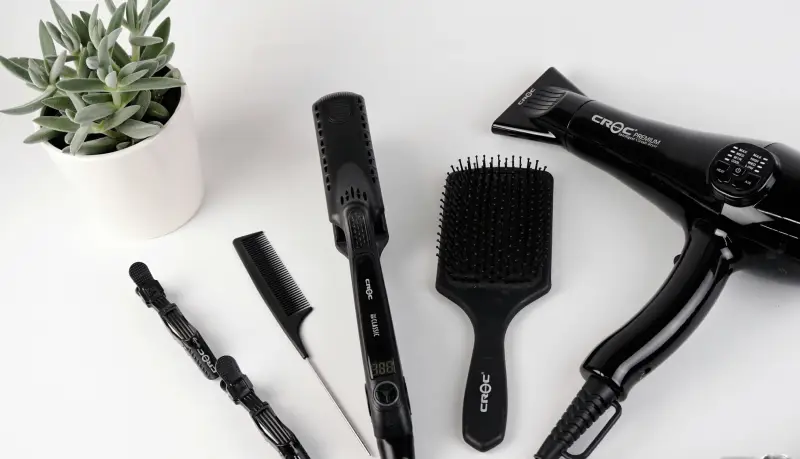Caring for Color-Treated and Damaged Hair: Expert Tips, Remedies, and How Hair Spa Treatments Can Help

Author: Nina
Color-treated hair can be a great way to showcase your personal style, but it often comes at a cost—damage. Chemical processing can weaken the structure of your hair, leading to dryness, split ends, and even breakage if not handled properly. While there is no one-size-fits-all solution, understanding what causes hair damage and how to care for color-treated locks can significantly improve your hair's health and appearance.
In this comprehensive guide, we'll explore why color-treated hair is more prone to damage, discuss effective remedies and everyday tips, and highlight how hair spa treatments can offer additional support. By the end, you'll have all the tools you need to maintain vibrant color while minimizing the risk of long-term harm to your hair.
Table of Contents
- Why Color-Treated Hair Is Prone to Damage
- Signs Your Hair May Be Damaged
- Top Tips for Caring for Color-Treated Hair
- Home Remedies and Essential Ingredients
- How Hair Spa Treatments Can Help
- Long-Term Maintenance for Vibrant, Healthy Hair
- Final Thoughts
Why Color-Treated Hair Is Prone to Damage #
Chemical processes like bleaching, dyeing, or highlights affect the hair cuticle, which is the protective outer layer of each hair strand. During coloring, the hair's cuticle is lifted to allow the color to penetrate the cortex (the inner layer containing pigment). This lifting process:
- Weakens the Cuticle: A lifted or partially open cuticle allows moisture to escape more easily, making hair more susceptible to dryness and brittleness.
- Alters Hair Proteins: Repeated chemical processes can break the protein bonds that give your hair strength and elasticity.
- Disrupts Natural Oil Distribution: Your scalp's natural oils have a harder time traveling down the shaft of chemically treated hair, leading to dryness and potential breakage.
Heat styling, exposure to UV rays, and everyday wear-and-tear further compound these effects, especially if your hair is frequently colored or highlighted. Over time, hair can become weak, lose its shine, and become more prone to split ends and breakage.
Signs Your Hair May Be Damaged #
Not all damage is immediately visible, and catching the early signs can help you take corrective steps before the problem escalates. Look out for:
- Dryness and Dullness
- Chemically treated hair often struggles to retain moisture, leading to a lackluster appearance.
- Excessive Breakage
- If you notice a significant amount of hair on your brush or pillow, your strands may be snapping off due to weakened bonds.
- Split Ends
- The ends of your hair may appear frayed or "feathered," an indication that the protective cuticle is wearing away.
- Tangled or Knotty Hair
- Damaged hair with a rough cuticle surface can easily catch and tangle, making styling a chore.
- Loss of Elasticity
- Healthy hair stretches slightly and bounces back. Over-processed hair often loses its elasticity and feels limp or gummy when wet.
If you identify more than one of these warning signs, it's time to reassess your hair care routine and possibly seek professional advice. Early intervention can prevent further damage and help you preserve hair length, strength, and color.
Top Tips for Caring for Color-Treated Hair #
Maintaining vibrant color and healthy hair can feel like a balancing act. Here are some practical steps to protect your chemically treated tresses:
1. Choose Color-Safe Products
- Sulfate-Free Shampoos: Traditional shampoos with sulfates can strip color and cause dryness. Opt for gentle, sulfate-free formulas designed for color-treated hair.
- Color-Protecting Conditioners: Look for conditioners labeled "color-safe" or "color-protecting." These often contain antioxidants and UV filters that help prevent fading.
2. Wash Your Hair Less Frequently
- Shampoo Every Other Day (or even less often): This helps preserve natural oils and reduce color fading.
- Use Dry Shampoo between washes if your scalp tends to get oily or sweaty.
3. Limit Heat Styling
- Lower the Temperature: If you must use blow dryers, flat irons, or curling wands, keep them at the lowest effective temperature.
- Thermal Protectants: Always apply a heat protectant spray or cream before styling to form a protective barrier.
4. Practice Gentle Drying Techniques
- Microfiber Towels: Pat or gently squeeze out excess water with a soft towel; avoid vigorous rubbing that can fray the cuticle.
- Air Dry Whenever Possible: Excessive heat from blow dryers can exacerbate damage.
5. Schedule Regular Trims
- Trimming Every 6–8 Weeks: Removes split or damaged ends, preventing them from traveling further up the shaft.
- Dusting: If you're hesitant to lose length, ask your stylist for "dusting," where only the most damaged ends are trimmed.
Home Remedies and Essential Ingredients #
For color-treated or damaged hair, certain at-home treatments and ingredients can make a noticeable difference when used consistently.
A. Protein Treatments
- Egg Masks: Rich in proteins and fatty acids, eggs can temporarily strengthen the hair shaft. Combine with a small amount of olive oil and apply to damp hair for 20 minutes.
- Keratin-Infused Products: Keratin is the primary protein in hair. Shampoos, conditioners, or leave-in treatments containing keratin can help reinforce weak strands.
B. Deep Conditioning
- Coconut Oil: Known for its ability to penetrate the hair shaft, coconut oil provides deep hydration. Warm a small amount and apply to the mid-lengths and ends of your hair.
- Avocado and Banana Mask: Blend half an avocado with a ripe banana for a vitamin-packed conditioning treatment. Rinse thoroughly to avoid residue.
C. Leave-In Treatments and Serums
- Silicone-Free Serums: While silicone-based products can temporarily mask damage, they sometimes cause buildup and dullness over time. Opt for silicone-free serums that rely on natural ingredients.
- Leave-In Conditioners: Ideal for daily use, a lightweight leave-in product can protect color-treated hair from external stressors and keep it hydrated throughout the day. D. Scalp Care Gentle Scalp Massage: Promotes blood flow, delivering nutrients to hair follicles. Use light pressure to avoid damaging color-treated strands.
- Aloe Vera Gel: Soothing and hydrating, pure aloe vera gel can calm an irritated scalp often made sensitive by chemical processes.
How Hair Spa Treatments Can Help #
While at-home care is crucial, professional hair spa treatments offer targeted solutions that address the deep-rooted causes of damage in color-treated hair. Here's how:
1. Customized Deep Cleansing
- Clarifying Shampoos: A hair spa therapist may start with a clarifying shampoo to remove any product buildup without aggressively stripping your color. This creates a clean slate for subsequent treatments.
2. Intensive Repair Masks
- Protein-Rich Formulas: Specially formulated masks can help rebuild the weakened protein structure in chemically treated hair.
- Hydrating Complexes: Hair spa treatments often include potent moisturizers that can penetrate deeper than regular conditioners, rejuvenating the cuticle and cortex.
3. Scalp Analysis and Massage
- Personalized Assessment: A professional can identify signs of scalp distress or inflammation caused by chemical colorants.
- Therapeutic Massage: Gentle scalp massage enhances blood circulation, optimizing nutrient delivery and relaxing tight muscles. This also helps in evenly distributing the nourishing products.
4. Heat or Steam Application
- Steam Therapy: Warm steam opens up the hair cuticle, allowing treatments to penetrate deeply. This is especially beneficial for damaged, porous hair.
- Heat Caps: Used during conditioning, they further enhance ingredient absorption for maximum repair.
5. Protective Finishing Treatments
- pH Balancing: Professional hair spa services often end with a product designed to seal the cuticle and balance the hair's pH. A sealed cuticle helps lock in color and moisture.
- Leave-In Products: Salons may apply specialized serums or sprays designed to protect your hair from UV rays, pollution, and heat styling.

Long-Term Maintenance for Vibrant, Healthy Hair #
Caring for color-treated and damaged hair is an ongoing process. Consider these strategies to keep your locks vibrant and resilient in the long run:
A. Opt for Ammonia-Free Dyes
- Less Harsh Chemicals: Ammonia-free formulas can be gentler on the hair shaft, reducing the likelihood of severe cuticle damage over time.
B. Space Out Your Color Sessions
- Roots-Only Touch-Ups: If possible, only retouch the regrowth area rather than coloring the entire length again.
- Wait Between Sessions: Allow at least 6–8 weeks before reapplying color to let your hair recover and regain some of its natural oils.
C. Use UV Protection
- Hair Sunscreens: Some leave-in conditioners and sprays contain UV filters to guard against color-fading and dryness from sun exposure.
- Wear Hats: A stylish hat not only adds flair to your outfit but also shields your hair from damaging UV rays.
D. Maintain a Balanced Lifestyle
- Hydration and Nutrition: Drink enough water and include nutrient-rich foods like leafy greens, lean proteins, and healthy fats to support hair growth.
- Reduce Stress: Chronic stress can affect the overall health of your hair. Activities like yoga, meditation, and regular exercise can help.
- Adequate Sleep: Aim for 7–9 hours of sleep each night to allow your body time to repair and regenerate, including hair follicles.
Final Thoughts #
Color-treating your hair doesn't have to mean compromising on health and shine. By understanding the causes of damage, prioritizing proper at-home care, and leveraging hair spa treatments for deeper repair, you can enjoy vibrant color without sacrificing hair strength.
The key is adopting a holistic, long-term strategy:
- Invest in quality, color-safe products
- Limit heat exposure and chemical processing
- Schedule regular hair spa sessions to rejuvenate both scalp and strands
With consistent effort and the right resources, you can keep your color-treated hair looking radiant, smooth, and full of life. Because when your hair is healthy, it shows—and that's truly the best backdrop for any shade you choose.
Ready to transform your color-treated hair from dull and damaged to vibrant and healthy? Book a hair spa treatment at a reputable salon near you. By combining at-home care with professional expertise, you'll set yourself on the path to stronger, shinier, and more resilient tresses—all while enjoying the creative freedom of hair color.
